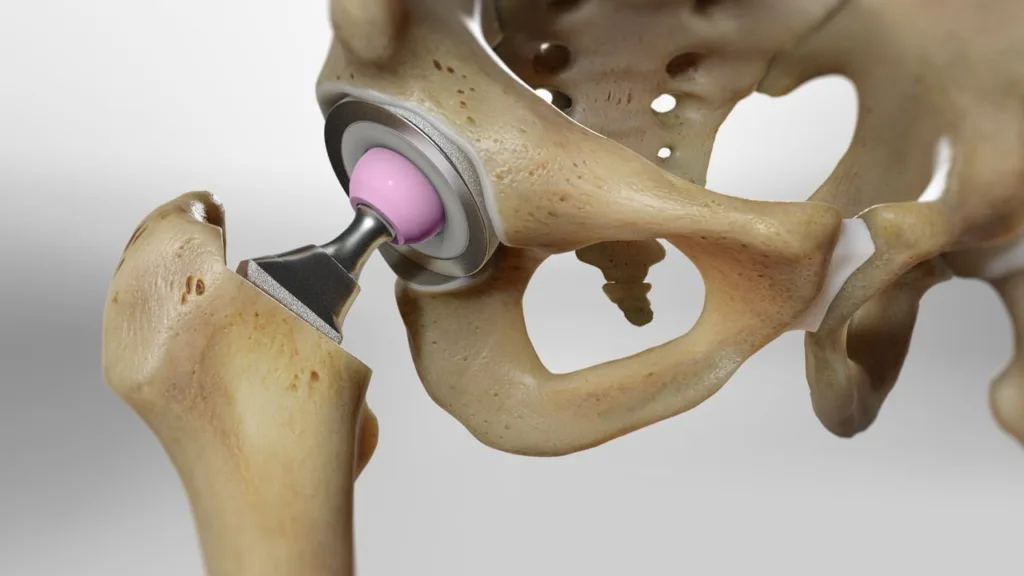Hip replacement surgery is a common procedure, usually performed on elderly patients who suffer from osteoarthritis or other hip joint disorders. The surgery involves replacing the damaged joint with an artificial implant, which can improve mobility and reduce pain.
One of the most important aspects of recovery after hip replacement surgery is regaining the ability to walk unaided. Patients typically rely on crutches or a walker for the first few weeks after surgery, but eventually, they should be able to walk without any assistance.
The timeline for walking unaided after hip replacement surgery varies depending on several factors, such as the patient’s age, oveall health, and the severity of the joint damage. In general, patients should be able to stop using their crutches or walker within 4 to 6 weeks after surgery. However, the use of a cane may still be necessary for safety and balance for up to 2-4 weeks.
During the initial weeks, patients should follow their doctor’s instructions and avoid putting too much weight on their new hip joint. Physical therapy is usually recommended to help rebuild strength and flexibility in the hip, which can enhance the recovery process.
As the patient progresses, they can gradually increase their activity level and begin to perform normal daily activities, such as walking, climbing stairs, and standing for extended periods.
It’s important to note that extreme movements or sports should be avoided for at least several months after surgery. High-impact activities such as skiing, running or jumping can put significant stress on the new joint and increase the risk of complications.
Regaining the ability to walk unaided after hip replacement surgery is an essential part of the recovery process. With proper care, follow-up, physical therapy, and gradual increase in activities, patients can expect to return to their normal activities within a few months after surgery.
How Long After Hip Replacement Can I Walk Unaided?
After hip replacement surgery, it usually takes around 3 to 6 weeks to be able to walk unaided without the use of a walker or crutches. However, the exact timeline varies from person to person and depends on factors such as the individual’s overall health, age, and the extent of the surgery. While it is important to follow your surgeon’s instructions and rehabilitation program, it is also crucial to listen to your body and not rush the recovery process. It is advisable to discuss any concerns or questions you may have about your recovery with your healthcare provider.

How Long After Hip Surgery Can I Walk Without A Cane?
After hip surgery, the timeline for walking without a cane varies from patient to patient. In general, most patients continue to use a cane for walking until 2-4 weeks postoperative. However, it is important to note that the duration of cane use may depend on your individual healing process and your surgeon’s recommendations. If you still feel that you need the cane for safety or balance after this time period, it is perfectly acceptable to continue using it. It is always best to follow your surgeon’s guidelines and recommendations to ensure a safe and successful recovery.
Is It OK To Walk Without Crutches After Hip Replacement?
After a hip replacement surgery, it is generally recommended to use crutches or a walker for the first few weeks to avoid putting too much pressure on the new hip joint. However, as the healing progresses and the pain reduces, you can start to put more weight on the joint and gradually reduce the use of crutches. Your doctor will advise you on when it is safe to stop using crutches and start walking withot support. Typically, this can take around 4 to 6 weeks depending on the individual’s healing process. It’s important to follow the instructions of your doctor and physical therapist and not to rush into walking without support too soon. Walking without crutches prematurely can put unnecessary strain on the hip joint and hinder the recovery process.
Conclusion
Hip replacement surgery is a common procedure that is performed to alleviate pain and improve mobility in patients with hip problems. The recovery period can be challenging, but with proper care and following your doctor’s instructions, most patients can expect to return to their normal activities within a few months. Although it’s important to avoid high-impact activities or sports that may put your new hip at risk, many patients find that they are able to resume their favorite activities with the help of physical therapy and a gradual return to exercise. Ultimately, hip replacement surgery can prvide significant relief and improve the quality of life for those suffering from hip pain or mobility issues.
